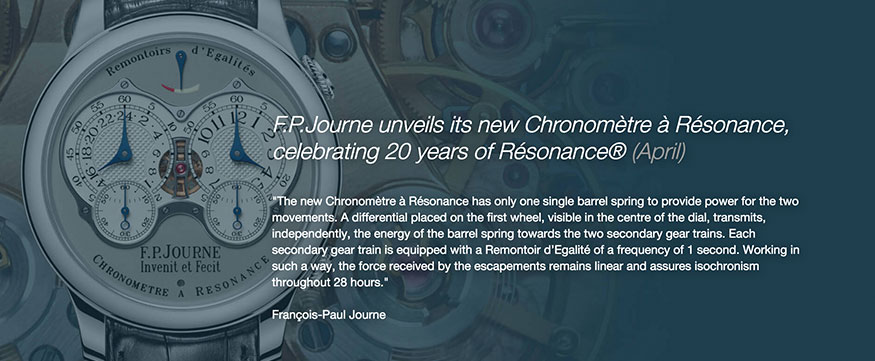Success Resonates On
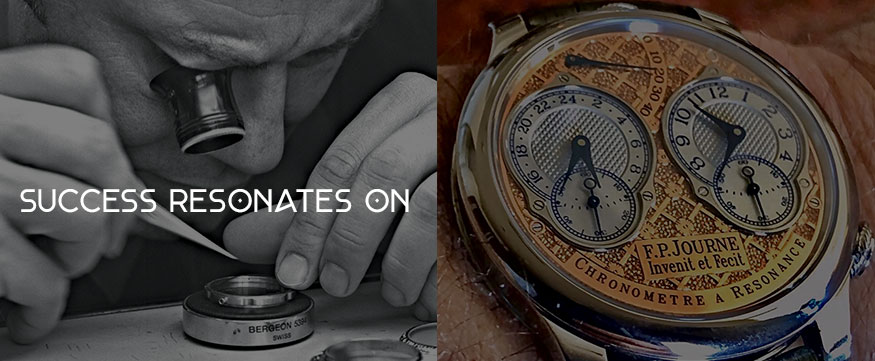
When F.P.Journe released his first tourbillon in 1999, it featured the Remontoir d’Egalite.
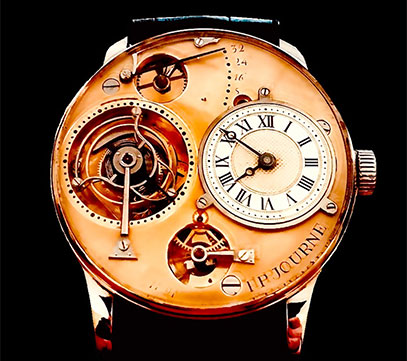
A tourbillon is a mechanism that protects the escapement of a timepiece against the effect of gravity as it rests stationary. This mechanism was invented and used in pocket watches as they remained suspended in the pockets of jackets.
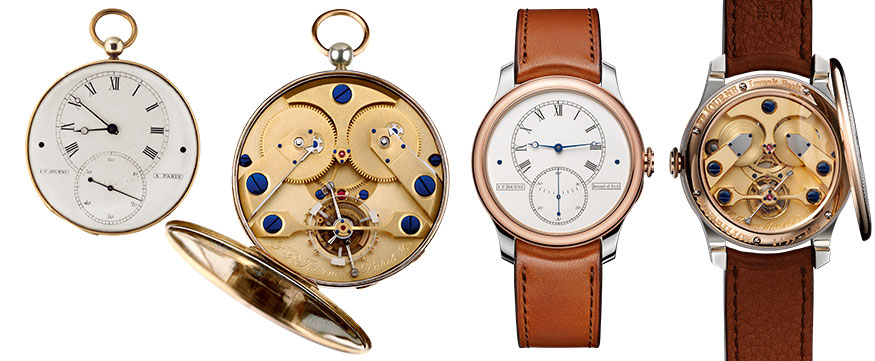
The 'Thirty year anniversary' wristwatch of Journe's first tourbillon pocket watch from 1983 made entirely by hand.
Wrist watches on the other hand, rarely remain in a static position and the tourbillon is neither a necessary nor practical addition to the movement. Owing to its extremely complex design, only the most skilled watchmaker can construct tourbillons, which is why many complicated wrist watches house the mechanism inside as a major flex over other brands. The Remontoir d’Egalite is F.P.Journe’s version of the constant force escapement.

L TO R - Remontoir d’Egalite with a dead second mechanism, the vertically mounted tourbillon featuring dead seconds and the case back view of the same timepiece
A quick recap: the constant force mechanism in a watch makes sure a consistent amount of power is delivered from the mainspring barrel, down the gear train to the escapement, irrespective of whether the watch is fully wound or unwound.
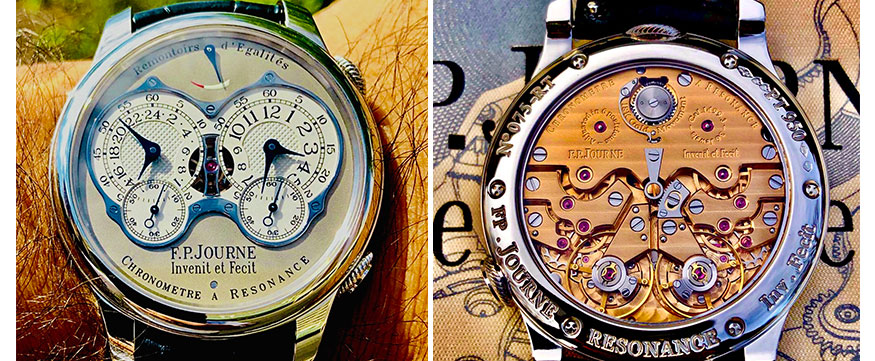
Photo courtsey: SHANI.WATCH
In 2020, Journe released the current version of the original Résonance. The most impressive change was Journe’s addition of the Remontoir d’Egalite mechanism, one to each of the gear trains. Achieving resonance in a wrist watch was clearly not enough for F.P. Journe. He continued pushing the envelope by fitting not one but two Remontoirs into a 40mm case to further improve and complicate his creation. Through these additions, the mainspring barrel delivers consistent power to its respective escapements. The two constant force mechanisms rewind themselves once every second, enabling a steady delivery of power from the mainspring barrel.
Instead of two mainspring barrels, he retained only one to drive the watch. Power from this barrel was distributed equally by a differential you see in the small opening at the centre of the dial, which is then transmitted to the two escapements that continued to beat in resonance just like the watch of 2000. The 2020 version of the Chronomètre à Résonance is very similar in overall appearance to its former self, with only a few minor changes to the dial.The balances still beat in perfect synchronicity and resonance as the name suggests.
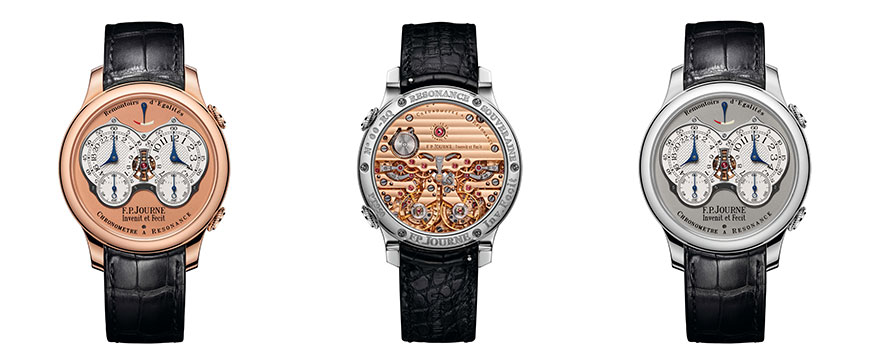
The Chronomètre à Résonance seen with the differential mechanism in the small opening at the centre of the dial.
After writing this blog I still feel it does not do full justice to François-Paul Journe’s work. No blog or written piece can or ever will. It is impossible to quantify and record research, trial and error, struggle and finally, the success that is now synonymous with the man. I have tried, to the best of my ability, to break down individual definitions of watch mechanisms and parts, in great detail, in these two blogs.
.jpg)
I write for the casual reader who may know nothing of the inner workings of a watch, but 1,500 words later will begin to comprehend and marvel at the achievement of this French master watchmaker. F.P. Journe has revolutionised the art of watchmaking while his craft still remains firmly embedded in history. History that goes back to the French Revolution of 1789 when the cry of, “Liberté, égalité, fraternité”’ resounded through the whole of France.
Thanks to Journe, this slogan of the revolution remains timeless with Liberte’ representing the free thinking mind of a creative genius. Egalite’ speaking of the symmetry of thought and process that resulted in the Chronometre Resonance, and fraternite’ in the two movements locked together in perfect harmony for all time…
